KEEPING SOME GREAT BRANDS ALIVE
PRESS PLAY >> TO VIEW KEN’S WELCOME MESSAGE FOR APRIL.
It’s been reassuring over the past couple years to observe the rebound made by the American car companies. It just seems like a few weeks ago that we were wondering if GM or Chrysler would survive without government help or whether Ford could set new standards for cars that people really wanted to buy and drive. Fast forward and it’s been exciting to see the strides made by the big three both in quality and in brand reputation after so many years of neglect.
That’s why it’s disheartening to see the problems that GM has brought upon itself with the recall scandal and lack of strong leadership in dealing with a PR nightmare.
It’s interesting to note that when the news broke on this situation that most of the brands that were mentioned in the recall problem were no longer in business. It makes you wonder what really happened with Pontiac, Saturn, and Oldsmobile. And where is Mercury and Continental or Plymouth and Thunderbird. All of these brands had great recognition, significant top-of-mind awareness, and (even as sales slumped) a loyal customer and dealer base. Why did they have to die? Brands consistently need to be reviewed, re-formulated, and re-marketed in order to keep up with the changes in customers and competition. However, it seems like the auto companies would rather just call it a day, pack up their design tools, close up the plants and move on.
I was thinking about some the brands that my first employer, Procter & Gamble has developed successfully and then sold off to other companies to continue their market share growth. I worked on Folgers coffee and it continued to be a market share leader in the category for years until P&G decided to focus on other categories of business. They didn’t just close down the brand, however. Instead they sold it to Smuckers who has continued to grow the brand and it’s share with essentially the same successful brand strategy that has been in place for years. Why couldn’t the car companies do the same..
Think about some of these brands and what could possibly have happened to keep them alive and successful.
 I think BMW could have taken over Pontiac and made it an American Driving Machine. For years Pontiac was branded as a performance car and by narrowing its brand focus would still have appeal to a younger, American driver.
I think BMW could have taken over Pontiac and made it an American Driving Machine. For years Pontiac was branded as a performance car and by narrowing its brand focus would still have appeal to a younger, American driver.
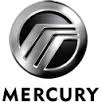 Mercury had a major share of the mature drivers (it was #1 overall in Florida for many years). If Volvo had taken over the brand and refocused it as something more than a Ford with a different emblem and model name, it could capitalize on the quality and dependability that Volvo is known for with the comfort that older Americans want.
Mercury had a major share of the mature drivers (it was #1 overall in Florida for many years). If Volvo had taken over the brand and refocused it as something more than a Ford with a different emblem and model name, it could capitalize on the quality and dependability that Volvo is known for with the comfort that older Americans want.
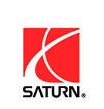 Saturn was one of the best branding stories in any category when it was introduced. Nissan or Toyota could certainly have applied some of their innovations to keep the loyal Saturn customers and again focus the brand on sedans that put it on the map originally (rather than SUV’s and sports cars).
Saturn was one of the best branding stories in any category when it was introduced. Nissan or Toyota could certainly have applied some of their innovations to keep the loyal Saturn customers and again focus the brand on sedans that put it on the map originally (rather than SUV’s and sports cars).
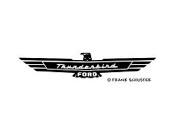 Thunderbird was a legendary sports car like Corvette and the brand was one of the most successful re-introductions a few years ago. Think what someone like Suburu or Kia could have done to bring Asian quality and design to a sporty new T-bird brand.
Thunderbird was a legendary sports car like Corvette and the brand was one of the most successful re-introductions a few years ago. Think what someone like Suburu or Kia could have done to bring Asian quality and design to a sporty new T-bird brand.
 Oldsmobile could have also capitalized on the Baby Boomer market who still wanted some of the quality that their “fathers” wanted in their cars. With a reputation from Hyundai or Land Rover and some re-styling that doesn’t look like another Buick, the brand could prosper in today’s market.
Oldsmobile could have also capitalized on the Baby Boomer market who still wanted some of the quality that their “fathers” wanted in their cars. With a reputation from Hyundai or Land Rover and some re-styling that doesn’t look like another Buick, the brand could prosper in today’s market.
 Look how Fiat/Chrysler has re-introduced the Fiat 500 which had a terrible brand reputation in the ’60’s and ’70’s in the U.S. However, now it’s cute, trendy, and appeals to a whole new market that didn’t even know the care ever existed before.
Look how Fiat/Chrysler has re-introduced the Fiat 500 which had a terrible brand reputation in the ’60’s and ’70’s in the U.S. However, now it’s cute, trendy, and appeals to a whole new market that didn’t even know the care ever existed before.
![]() If Plymouth had stuck with cars like it’s Land Cruiser and Duster and had the creativity of a Mazda re-branding it , the brand could still be around and have a younger, loyal customer base.
If Plymouth had stuck with cars like it’s Land Cruiser and Duster and had the creativity of a Mazda re-branding it , the brand could still be around and have a younger, loyal customer base.
Of course there are many other considerations before a company can sell one of its brands to another company, like manufacturing, dealer organizations, etc. However, there are brands that could still prosper by focusing on their historic strengths and what today’s consumer wants in a vehicle. Bring in some new perspective and creativity and these brands can survive and gain market share. For a brand to be reborn requires the same ingenuity and strategy that is required by new products and innovations. If some of the brands mentioned above had an infusion of branding instead just a new ad campaign with tired model names, the auto industry would still be competitive and a showcase of effective marketing.
A REASON FOR YOUR BRAND
PRESS PLAY>> TO VIEW KEN’S VIDEO INTRO TO THIS MONTH’S BLOG
A visit to the DaVinci Machines exhibit last month made a real impression on me about the genius of this 15th Century artist and  designer. While there were only a limited number of his designs on display (his notes reflected several thousand ideas that were developed), I was convinced that every one was developed for a particular reason—usually military weapons—that provided a solution to a particular problem or opportunity. Whether it was the ball bearing or a device that helped build a pyramid before hydraulics, the value of these concepts increased as the need for their benefits became more obvious in providing a competitive advantage over the users adversary.
designer. While there were only a limited number of his designs on display (his notes reflected several thousand ideas that were developed), I was convinced that every one was developed for a particular reason—usually military weapons—that provided a solution to a particular problem or opportunity. Whether it was the ball bearing or a device that helped build a pyramid before hydraulics, the value of these concepts increased as the need for their benefits became more obvious in providing a competitive advantage over the users adversary.
The same holds true as marketers develop new or improved products to gain market share versus their competition. So many new products or stores are introduced on to the scene for no other reason than to compete with a brand that’s already there. If they are successful, let’s get a piece of the action. Unfortunately, with so many choices vying for the same dollar from the customer, we end up with just another brand. If you walk through a shopping center (an activity that fewer and fewer of us get involved with these days), you can’t help wonder why this or that store with a name on the sign that you’ve never heard of ever managed to get into the marketplace. How many more fast food burger places do we really need offering basically the same ground beef on a bun? As I watched the $4 million Super Bowl spots, I kept asking what is the reason that I should buy this product. Now, I know that established brands like Budweiser and Coke don’t have to continually explain what they are. However, they do have to reinforce the brand as part of everyone’s lifestyle and create a brand preference. I took note of the Chobani Greek Yogurt spots on the Olympics recently and I kept asking what does “How Matters.” mean and why should I opt for their brand or for Greek Yogurt in the first place? Nice spots for the Olympics spirit, but why Greek Yogurt. I like Activia anyway.
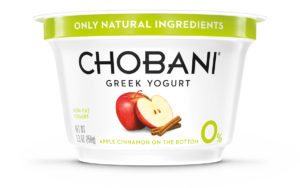 The point is that the first essential characteristic of a successful brand is to have a reason for being. The initial work is to determine why someone would try your product—or keep using it—and then reinforce this reason with an effective, creative message that cuts through the clutter and truly differentiates your brand from the others.
The point is that the first essential characteristic of a successful brand is to have a reason for being. The initial work is to determine why someone would try your product—or keep using it—and then reinforce this reason with an effective, creative message that cuts through the clutter and truly differentiates your brand from the others.
It occurs to me the high-priced spots on the major media events that the primary reason for being is to run creative commercials with very little emphasis on providing a reason why or a really competitive message that differentiates. It’s not unlike most shopping malls these days which don’t provide much reason to shop there other than “under one roof”. Thus, so many are being torn down or sit half empty these days. Yet, the town centers and shopping villages are thriving because they provide a more convenient, pleasant shopping experience—and a return to the past when downtown shopping was neighborhood gathering spot with personality and with ambience that beats most big mega malls or big box retailers.
So, if your brand is beginning to lose share of mind and share of wallet, it’s time to go back and revisit what prompted your product or service in the first place. Are the reasons still relevant? Do they still differentiate you from the competition? Do they provide value beyond a sale price? Do they provide a reason for a personal relationship with the customer that really is the essence of a brand? If not, it’s time to revisit and find a reason for being.
IN MEMORIAM: I lost a good friend this week. Phil Kabachnick was professional retailer who brought innovation and moxy to his store in Middletown, Connecticut, for years. He understood customers and how to market to them by understanding the trends and what would keep them from going to the Big Apple to do their fashion shopping. After he closed the business and and was the behind-the-scenes operator of his wife, Terri’s, consulting business, we shared some office space here in Tampa Bay. We also shared many discussions on retail, sports, and business building ideas over many Chinese lunches. He fought a good battle against cancer and kept his sense of humor till the end. I’ll miss him.
DO SOMETHING SPECIAL WITH YOUR BRAND!
PRESS PLAY>> TO VIEW KEN’S HOLIDAY MESSAGE
Merry Christmas! It’s a special time of year and a time to do something special with your family, friends, associates…and your brand.Marketers have always used this time of year to break the mold of their ongoing ad campaigns to be more creative, more promotional, and (unfortunately, not often enough) do something special for their customers and employees.
![]() The Macy’s Thanksgiving Parade is a special tradition that helps kick of the holiday season for retailers all over the world. Yet, it is also a wonderful sales promotion event to generate sales, awareness, and strengthen the store’s brand as a special place for holiday gift purchases.
The Macy’s Thanksgiving Parade is a special tradition that helps kick of the holiday season for retailers all over the world. Yet, it is also a wonderful sales promotion event to generate sales, awareness, and strengthen the store’s brand as a special place for holiday gift purchases.
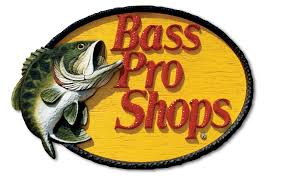 Bass Pro Shops has created Santa’s Wonderland at its mega-stores for several years now, but before you say that “Well, what’s new about that? Stores and malls have had Santa for years.) take a trip to your nearest Bass Pro and experience the transformation of the stores and their customers into a Christmas right out of the Hallmark Channel.
Bass Pro Shops has created Santa’s Wonderland at its mega-stores for several years now, but before you say that “Well, what’s new about that? Stores and malls have had Santa for years.) take a trip to your nearest Bass Pro and experience the transformation of the stores and their customers into a Christmas right out of the Hallmark Channel.
And it’s not just retailers who capitalize on the season to do something special. If you haven’t seen it yet, take a look at this five-minute video on what Canadian airline WestJet did this winter. This is truly an amazing event:
http://www.youtube.com/watch?v=zIEIvi2MuEk
The idea of making the Christmas wishes of all the passengers on two of their flights sounds simple enough, but it took the efforts of everyone from airport agents to the baggage handlers to make it happen seamlessly. Corporate support from other companies like Best Buy helped them share in the positive media coverage that this event achieved. And it was a lot of coverage: 27 Million views on YouTube in less than a week; major news coverage in nearly all national network and cable news programming; buzz on social networks. All giving testimony to the kind of service (It took 175 employees to pull off this event.) and commitment that WestJet must provide its passengers on an ongoing basis. The interactive kiosks at the gate were state of the art, the delivery of the gifts on the baggage carousel was an event in itself, and the wonder and surprise of the lucky Calgary-bound passengers reinforced WestJet’s brand as an airline whose employees genuinely care about making every flight special. If you want to read more about what it took, click on:
http ://www.cbsnews.com/news/westjets-holiday-video-becomes-an-online-sensation/
://www.cbsnews.com/news/westjets-holiday-video-becomes-an-online-sensation/
for just one of the news coverage articles that have appeared
A sales promotion event? Sure. But it goes beyond that and it’s disappointing that more advertisers don’t do something special for the holidays that helps reinforce their brands the rest of the year. Have a great Christmas and a Happy New Year!
HOLIDAY ADVERTISING – A TIME FOR BRANDING!
PRESS PLAY>> TO VIEW KEN’S MONTHLY VIDEO MESSAGE
Happy Thanksgiving! Here come the ads. Once again it’s time to be deluged by holiday advertising in every medium possible. Frankly, am I the only one bored to indifference by all the Black Friday ads. I liked it a lot more when it was the day after Thanksgiving. Having worked in department stores for several years, I remember the excitement of that day and the long hours because it really was something special. Sure, it’s a time to promote and generate as much traffic as you can get to stampede into your store at 5am, but it’s also a time to strengthen your brand.
Unfortunately, over the past several years, this time of year has degenerated from the time when retailers spent the most on creativity, in-store excitement, and marketing to one big SALE event. However, there are still some advertisers who take advantage of the seasonal opportunity for revenues and traffic by going after the heart (and brain) as well as the wallet. Let’s take a look at a couple retailers going after the same customers: Publix and Kmart.
There’s been a lot a buzz in the media and online about the Kmart holiday commercial for Joe Boxer. Take a look. Click on the link:
http://www.youtube.com/watch?v=-7Ub1x7Arfs
I have to admit that I kinda like the spot for its entertainment value. However, if I had the difficulties that Kmart has had over the past few years, I don’t think I would put all my creativity in trying to create a hip brand image of a line of underwear. I really don’t think this spot does anything for Kmart. Walk into a Kmart (if you can still find one that hasn’t closed in the past couple years) and you might see one cashier line open and a couple of customers usually waiting to get helped by an indifferent clerk. Meanwhile, Walmart, Target , Costco continue to add registers and sales. (Walmart’s latest spot talking about employee benefits really is super…but more on that in another blog.). Kmart needs to convince customers that there is a reason to shop there. That they can compete. That they are fun. Instead, they have a bunch of guys ringing their “brief bells” for Joe Boxer. No wonder they continue to shed stores and lose the customer’s interest.
Publix, the southeast grocery giant, has always done a marvelous job with its holiday and other seasonal advertising. They don’t just stop with TV spots however.
Their print, direct mail, and online messages are just as personal, just as creative, and just as successful in convincing their customer that “shopping is a pleasure” at their stores. Publix has gotten aggressive with promotions (watch out for the BOGO’s everywhere you look.) to keep their customers from migrating to Walmart.
Their stores continue to be some of the best run operations in retail, and their employees really do enjoy helping you get just what you wanted. People is my part of the world don’t just shop at Publix, they make “My Publix” part of their daily life.
Publix continues to endear itself and its brand to the hearts of people who value family events and all the food that goes with it. Eating a Publix meal is not just dinner, it’s a memory being made for the entire family. With advertising like this one below, Publix continues to grow its brand and beat the competition every day.
http://www.youtube.com/watch?v=08rj14I6QPY
It all seems so obvious about what really works at this time of year when it comes to advertising that sells. The brands that do well the rest of the year really do deck the halls when it comes to the holidays.
I hope you have a wonderful holiday
WHAT BRANDING IS NOT!
PRESS PLAY>>TO VIEW KEN’S WELCOME MESSAGE FOR THIS MONTH’S BLOG
I was driving back from the gym the other day when I pulled up behind a truck that was about to deliver fresh produce to a local convenience food store and deli. I couldn’t help notice the slogan on the back of the truck: R&G Produce “Lettuce Serve You”.
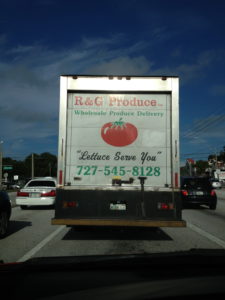 Now, I appreciate a good pun as much as anyone, but when used as a brand’s slogan, I usually find that it to be a weak effort at trying to create something memorable about the product or service. I suppose you could say that this implies better service in getting your lettuce fresh and on time, but it really needs more dressing (Ok, enough puns for now.) to make a differentiating statement. The truck sign did, however, remind me of how many companies try to create a brand by simply coming up with a new slogan or jingle. Most of the ad agencies that I worked with over the years claimed to be branding experts, but so often as soon as they got the assignment, the work started on a new ad campaign, slogan, logo, spokesperson, or package/store design.
Now, I appreciate a good pun as much as anyone, but when used as a brand’s slogan, I usually find that it to be a weak effort at trying to create something memorable about the product or service. I suppose you could say that this implies better service in getting your lettuce fresh and on time, but it really needs more dressing (Ok, enough puns for now.) to make a differentiating statement. The truck sign did, however, remind me of how many companies try to create a brand by simply coming up with a new slogan or jingle. Most of the ad agencies that I worked with over the years claimed to be branding experts, but so often as soon as they got the assignment, the work started on a new ad campaign, slogan, logo, spokesperson, or package/store design.
Yes, these are all important elements in communicating the brand strategy, but unless a marketer does all the important work first these tools can do nothing more than create awareness. It takes intense and comprehensive research to determine the market potential, the extent of the competition and their strengths and weaknesses, what differentiates your product from the others, and what motivations the customers have to even consider what you offer in the first place.
A comprehensive marketing plan is absolutely critical in the development of a successful brand. Far too often, however, this plan is confused with the media or communications plan and the most of the time, effort, creativity and budget are dedicated to the execution. It’s no surprise that many brands fail even though they were supported by outstanding creative executions in support of a flawed premise for why the customer should try the product in the first place. Burger King has consistently produced some of the best, most creative marketing efforts in the fast food business. Yet, they consistently fail to meet the standards set by their equally aggressive competitors when it comes to operations and service. Having it your way means more than having the right toppings on your burger, it means having an experience that is consistent, friendly and efficient. BK never seems to quite get there. The same can be said for brands like Infiniti, Sears, Discover and many others who fail to clearly define what makes their brand better and why the customer should have a positive preference for them over the competition.
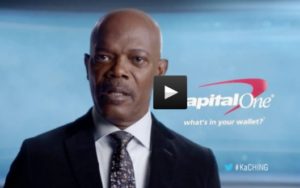
And another thing…Capital One has certainly created a unique brand in the highly competitive credit card business. I sometimes wonder where all that budget comes from to be able to ask the question: “What’s in your wallet?” in every imaginable way. I like Alec Baldwin, but I still am trying to figure out what the Vikings or Brave Heart look-alikes have to do with credit card points, but it certainly has worked. However, the new commercials with Samuel L. Jackson’s hardball pitch for their new Quicksilver card hits me the wrong way. Not that I don’t appreciate a straightforward approach, but does he really have to say “every damn day” to make the point? Cursing and innuendo have long become commonplace in today network programming on television, but it seems a large financial institution like Capital One could use some restraint and make their point without resorting to cursing and spending millions to send a message to our youth that it’s ok to be irreverent no matter who you are talking to. Moreover, what does this have to do with good branding?
4 KEYS TO AN ENDURING BRAND
PRESS PLAY>>TO VIEW KEN’S WELCOME MESSAGE FOR THIS MONTH’S BLOG
While in Michigan a couple weeks ago, I had the opportunity to present to a graduate class in Strategic Brand Communication at Michigan State University.I was impressed by the enthusiasm and interest in branding at the graduate level, but as I was sharing some case studies of brands that continue to succeed and some that have faded out of the marketplace, I realized that many of the students never heard of these brands. Given the fact that nearly half were international students from Asia and Eastern Europe and most of the rest were probably born after 1990, it was not surprising that I had to go a little deeper into the backgrounds of the companies I was using as examples. Yet, there were some that immediately struck a familiar note with the students. Brands like McDonalds, Lexus, WalMart, and Apple were already successful when these students were born and they continue to maintain a strong position that goes beyond top-of-mind awareness because of the relationships that they maintain with their customers.
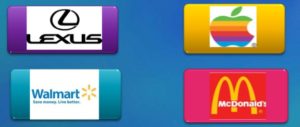
Like personal relationships, branding must continue to evolve as the situations (markets) change and as the customers change along with them. I showed the students how brands like Circuit City, Oldsmobile, Gateway, and Kmart have disappeared or are fading fast while the others mentioned above and long-time companies like AT&T, GE, Nordstrom’s, Coke, and Hallmark continue to grow in sales and in loyalty with their customers. So, what is it that these brands have in common that we can learn from as we continue to strive to make our brands endure and prosper. I think Dr. Len Berry at Texas A&M hit on the keys when he wrote several years ago about what successful stores had in common. He studied the retailers that not only had long-term positive sales trends but also were excellent stocks, great places to work and expanding their geographic and customer bases. Let’s look at how these relate to enduring brands in all categories:
1) They have a reason for being. It’s not enough just to be around for a long time and have good awareness. A brand must continue to be relevant and adjust with the times and the customers. McDonald’s continues to change its menus, its formats, and its marketing while still maintaining the great taste of its fries and Big Macs that customers keep coming back for. Their move to improve drive-thru’s, menu boards, breakfasts and desserts is an ongoing strategic activity and it has paid off as the company continues to grow here and abroad while faced with increased, tastier competition. Just being a new brand in a growing category is not enough, you must be differentiated by providing a value that creates an emotional bond with the customer.
2) They compete on value not just price. Price certainly continues to be important, but it only gets or keeps your brand on the playing field. Publix has built its brand on making shopping a pleasure, but other grocers (especially WalMart) continue to hammer away at EDLP as a competitive edge. Publix has responded with aggressive promotional offers (BOGO’s) but still maintains services and store improvements that the customers love and it communicates its marketing messages in a way that hits the heart as well as the wallet.
3) Make it convenient. This isn’t just having a store on every corner like Starbucks and Walgreen’s. It’s much more. Today’s customers want the entire experience to be hassle free and reliable. Being consistent in price, in-stock, service and layout, and quality are all expectations that today’s customer wants. Simply being online or having a new app isn’t enough to satisfy today’s customers. Pizza Hut continues to improve its menu while sticking to its pepperoni and mozzarella with new products, services, ease of ordering and ongoing promotions that keep it on top in the pizza wars.
4) Make it enjoyable. The experience must be one that makes the customer feel good about buying your brand. Not only should it be fun to shop but it must be rewarding experience that makes the customer feel good about sticking with your brand. Walgreen’s latest endeavors in showing how your purchase will help people less fortunate around the world complements their convenience and in-store consistency. Target’s support of education does the same while making it a fun place to spend your dollars. Revlon’s long-term support of breast cancer research helps their customers feel good while looking good as well.
Brand’s will endure by sticking to what got them there while constantly seeking ways to remain fresh and exciting.
YOU’RE GOING TO LIKE THIS BRAND…I GUARANTEE IT!
PRESS PLAY>>TO VIEW KEN’S WELCOME MESSAGE FOR THIS MONTH’S BLOG
The news last month that George Zimmer had been pushed out of the Men’s Wearhouse, the company he founded and built into the most successful men’s clothing specialty chain in the country, caught a lot of retail watchers by surprise.
Not only was Zimmer the founder of the chain, but he was also the face and the spokesperson for the company which he grew from one store to over 1100 with nearly $2 billion in sales in 40 years at the helm.

George Zimmer founder Men’s Wearhouse
Many trade writers are skeptical that the company will continue to grow without Zimmer’s familiar face and closing line (“You’re going to like the way you look. I guarantee it.) in every commercial. It brings up the question of how important a CEO spokesperson like Zimmer (or Lee Iacocca for Chrysler and Dave Thomas for Wendy’s before him) is to the success of the brand.
I believe that Zimmer was critical to Men’s Wearhouse, but not because of his consistent presence in their commercials over the years. I, too, had the impression that he wasn’t much more than Fast Eddy in New York or Ollie Fretter in Detroit were as familiar faces on TV. However, over 10 years ago, I had the opportunity to attend a presentation by Zimmer at Texas A&M’s Center for Retail Studies Symposium and it changed my impression completely. It also helped me understand why the Men’s Wearhouse brand was so successful. The familiar CEO spent a little time talking about the chain’s history and their marketing efforts which featured him. Then, he went into detail about how critical complementary sales and training were to building profitable and loyal sales. The key, he said, was the ongoing training that every store associate went through repeatedly to insure they were giving the best service and were committed to selling wardrobes rather than items.
That’s the key to successful retail brands—making sure that your associates live up to the brand everyday, with every customer. We don’t know whether the board at Men’s Wearhouse accelerated Zimmer’s exit because he no longer believed in the importance of the service and training. One thing for sure is that if the board and Zimmer’s replacement at CEO, Douglas Ewert, want to move away from these important components of the brand. The company will, indeed, miss their longtime spokesperson. I guarantee it.
STICK WITH YOUR BRAND…HOLD THE MAYO!
PRESS PLAY >> TO VIEW THIS MONTH’S WELCOME MESSAGE VIDEO
One of the things that I experienced during my 30+ years in the marketing business what the propensity for advertisers—especially retailers—to want to change their marketing messages (and often their brand positioning) too often. Usually it was because the company got tired of the message long before the customer even became totally aware of it. We live and die with the process of presentations, revisions, edits, production, edits, testing, edits, and reviews to the point that we get tired of the message before it has a chance to resonate with our customers. Granted we must constantly review our marketing efforts and evaluate the results, but sometimes it is more prudent to stick with what’s working and focus on the key strengths of the brand to make sure that our customers really know what we stand for. Which brings me to the subject of mayonnaise.
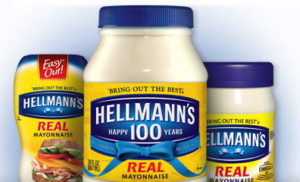 This year marks the centennial of one of the strongest brands in CPG—Hellmann’s Mayonnaise and the company’s marketing is celebrating with an effective campaign that sticks with what has made this the number one brand in the category for most of those 100 years. Hellmann’s is the top-selling mayo since Richard Hellmann started selling it in New York a century ago. Keeping the same product formula—and branding formula—throughout the years, the company has stuck with its “bring out the best” theme for the past 25 years. It’s parent, Unilever, has maintained the same recipe for success from its French roots and continues to insure that it has stayed with Richard’s wife’s version of the original recipe while constantly and consistently showing how mayo makes almost everything taste the best.
This year marks the centennial of one of the strongest brands in CPG—Hellmann’s Mayonnaise and the company’s marketing is celebrating with an effective campaign that sticks with what has made this the number one brand in the category for most of those 100 years. Hellmann’s is the top-selling mayo since Richard Hellmann started selling it in New York a century ago. Keeping the same product formula—and branding formula—throughout the years, the company has stuck with its “bring out the best” theme for the past 25 years. It’s parent, Unilever, has maintained the same recipe for success from its French roots and continues to insure that it has stayed with Richard’s wife’s version of the original recipe while constantly and consistently showing how mayo makes almost everything taste the best.
However, the mayo has not gone stale. Hellman’s has a cutting edge promotional plan to celebrate the first 100 years with aggressive TV and print complemented by digital ads, a Facebook page, YouTube videos featuring chef Mario Batali and a smart phone app with 30 of Batali’s favorite recipes using Hellman’s mayo. It all spreads on the success that has given the brand a 31.1% share of the $1.87 Billion mayonnaise market. Being first in the market isn’t the only advantage to the Hellman’s brand, it continues to build on its heritage and taste with a brand strategy that is consistent, aggressive and on target.
Great brands don’t have to change or stray from their roots. Like Hellman’s, brand such as Tabasco, Rolex, Ben & Jerry’s, Nordstrom’s and others have found that staying with what got them there is a great brand strategy.
DON’T FORGET TO CHECK OUT AMAZON AND KINDLE FOR “Brain Branding—Activate the Brain, Stimulate Your Brand” by Ken Banks and Robyn Winters. A new way to look at growing your brand—even if it’s been around for a 100 years!
BRANDING IS MUCH MORE THAN ADVERTISING – WHY RON JOHNSON FAILED AT JCP
PRESS PLAY>> TO VIEW KEN’S WELCOME MESSAGE FROM FRANCE.
With the ongoing poor results reported by JC Penney over the past several months, it came as no surprise to me as I arrived in France a couple weeks ago to learn that he had been fired. No matter how good your resume is, non-stop double-digit declines in revenues and profits—and the resultant plummeting of the stock price—Johnson couldn’t expect to survive the uproar from the board, Wall Street and long-time customers. I’ve written about the branding makeover at JCP a couple times this past year, but I felt it necessary to give one more opinion on why the guy who was so successful at Apple just couldn’t make it happen at a conventional department store.
First, let’s look at what Johnson had at Apple. First, Apple is a brand that was truly differentiated from the competition. Cutting-edge design. Breakthrough technology. Futuristic apps and products. These were all in place before he was so successful at Apple. Taking the brand principles that were in place and applying them (very well I must admit) to the retail operations for Apple truly set the stores up as a model for a consumer centric experience and one where the people, the design and the operations lived up to the brand promise everyday.
Second, Johnson had a strong, brand evangelist as a leader in Steve Jobs. While he was demanding and relentless, Jobs set a standard that people half as smart as Johnson would have succeeded by following. No such leadership existed at JCP. Johnson’s predecessors were traditional department store veterans who chose more to emulate and copy stores like Kohl’s and Macy’s and really never stood out as anything special. Business was built on ongoing promotions and awareness and while that generated volume, it didn’t develop a hallmark brand that the board wanted when it hired the new regime last year.
Third, JCP had built its growth in recent years on these promotions and coupons but failed to develop a loyalty to the stores and the people that quickly evaporated as soon as Johnson’s team adopted a new, everyday (somewhat) low price strategy. As I have written in this blog before, the mistake was to go to the extreme. JCP should have maintained a consistent (reduced) promotional plan to maintain it’s loyal sale shoppers while it developed the look and messaging that would have differentiated it from the other department stores.
Apple didn’t have to have sales because it built its brand on the products and the service that were so far above the competition. JCP had to gradually climb out of the hole it had dug for itself over the years with me-too advertising.
Ron Johnson, Michael Francis and the others in this new regime didn’t suddenly get dumb when they got to Plano. No they just tried to apply the principles of a strong brand to one that needed a lot more repair than they bargained for.
A REASON FOR BRANDING
PRESS PLAY >> NOW TO VIEW KEN’S WELCOME MESSAGE.
I was watching television a couple days ago when a new Sears appliance spot came on…and it was really creative and broke through the clutter. Frankly, I’ve been pretty impressed with the creativity in Sears commercials for several months now and have to give their advertising team credit for making a valiant effort to get the store back on its feet. (Can’t say the same for its sister store Kmart, however.)
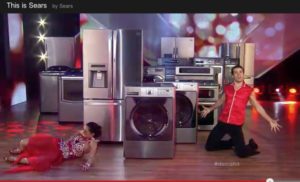 Unfortunately, I don’t believe any advertising—no matter how creative or well placed it is—can make up for the lack of a meaningful brand strategy. Despite all of the aggressive ads, Sears simply isn’t a factor to the consumer anymore. In many of the groups that I present to or work with, I ask the question “How many of you have shopped or considered shopping at Sears over the past 6 months?” The answer is almost universally a resounding “None!” It’s hard to believe, but what was once the #1 retailer in America is no longer a factor for most customers these days. If you wonder why this happened, I suggest considering what Dr. Len Berry of Texas A&M wrote many years ago about what successful store have in common. The number one trait that the hot stores shared then—and now—is that they have a reason for being. And that reason is not just because there are other retailers who offer the same merchandise and services in a similar box. It’s a real reason for existing and for being firmly entrenched into the shopping lists of many consumers. Ask yourself (unless you work there) if Sears disappeared tomorrow, would you really miss them? Would you wonder where you were going to shop for appliances, tools, paint, automotive supplies and service? All of these were distinguishable strengths that Sears once maintained in the marketplaces. They not only were top of mind, but they were almost synonymous with these categories in their heyday.
Unfortunately, I don’t believe any advertising—no matter how creative or well placed it is—can make up for the lack of a meaningful brand strategy. Despite all of the aggressive ads, Sears simply isn’t a factor to the consumer anymore. In many of the groups that I present to or work with, I ask the question “How many of you have shopped or considered shopping at Sears over the past 6 months?” The answer is almost universally a resounding “None!” It’s hard to believe, but what was once the #1 retailer in America is no longer a factor for most customers these days. If you wonder why this happened, I suggest considering what Dr. Len Berry of Texas A&M wrote many years ago about what successful store have in common. The number one trait that the hot stores shared then—and now—is that they have a reason for being. And that reason is not just because there are other retailers who offer the same merchandise and services in a similar box. It’s a real reason for existing and for being firmly entrenched into the shopping lists of many consumers. Ask yourself (unless you work there) if Sears disappeared tomorrow, would you really miss them? Would you wonder where you were going to shop for appliances, tools, paint, automotive supplies and service? All of these were distinguishable strengths that Sears once maintained in the marketplaces. They not only were top of mind, but they were almost synonymous with these categories in their heyday.
The problem is that Sears forgot what its brand was really all about way back when they tried their “Softer Side” and other failed formats. It forgot why people shopped them and ignored what the competition was doing in their own backyards with the categories I mentioned above. With all the negativity surrounding JCP these days, I suspect that despite some really creative print and broadcast advertising, they have moved away from what has made them a factor with customers in the past and their once loyal shoppers aren’t rejecting them. They simply are not considering because they have no reason to.
The first step in an effective brand strategy is to determine what your value is to your target customer and how will you differentiate your store or product from the competition. It is not just running a great ad or campaign. It’s providing a reason for being everyday.
